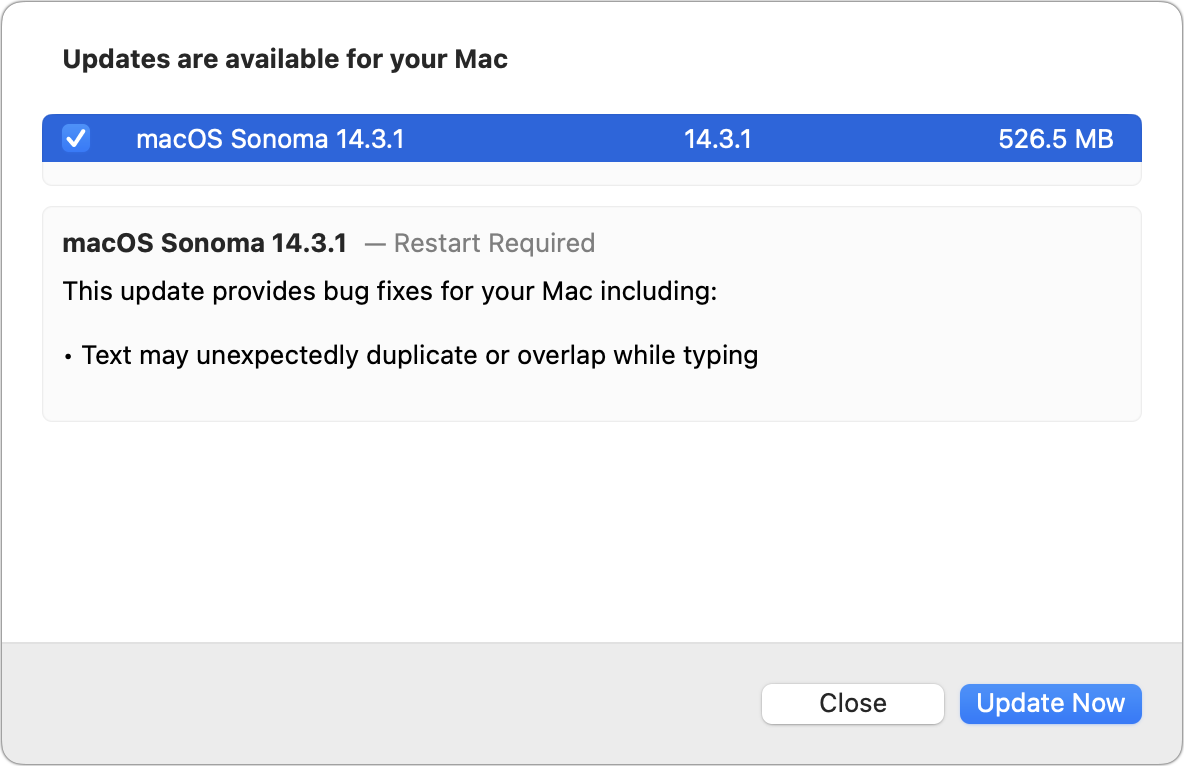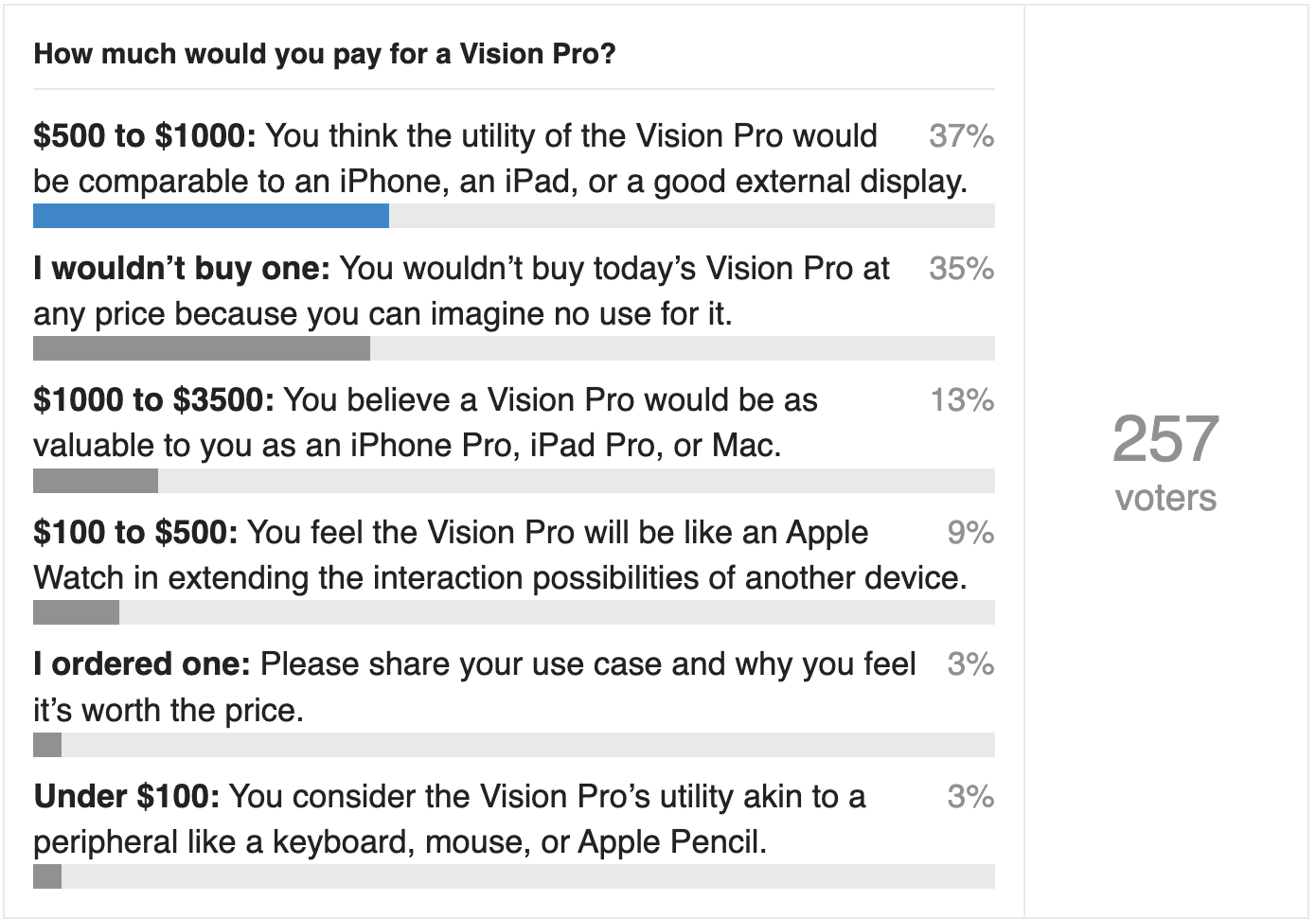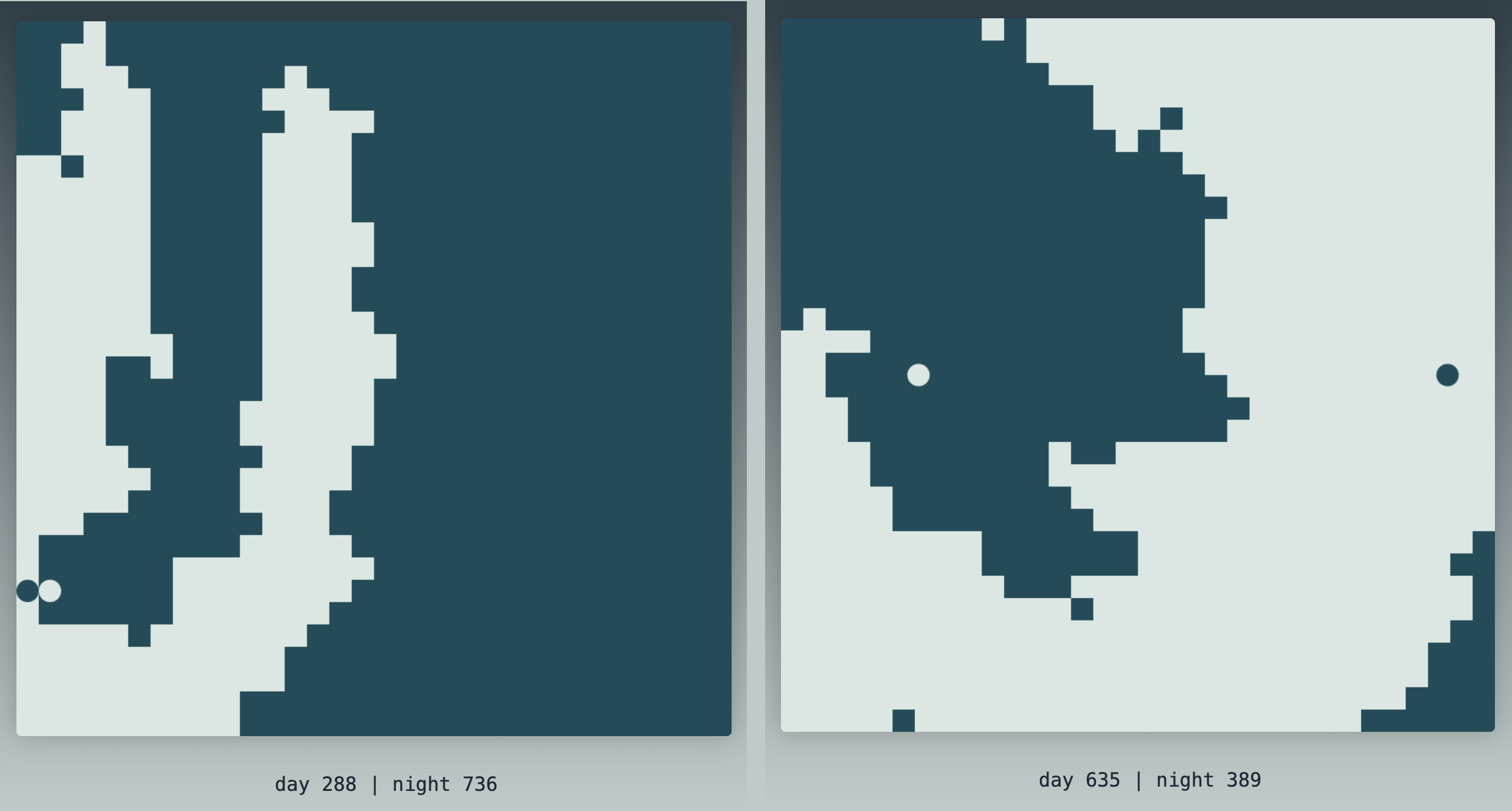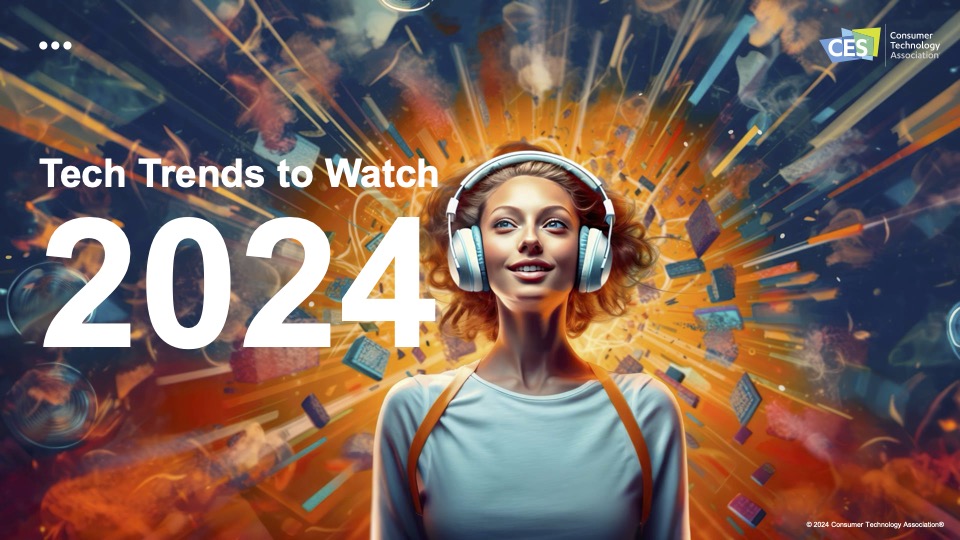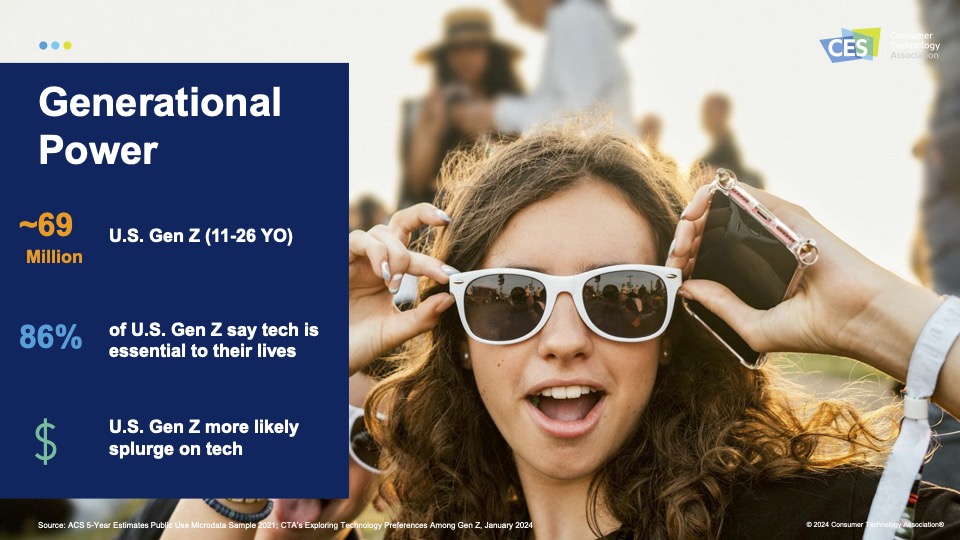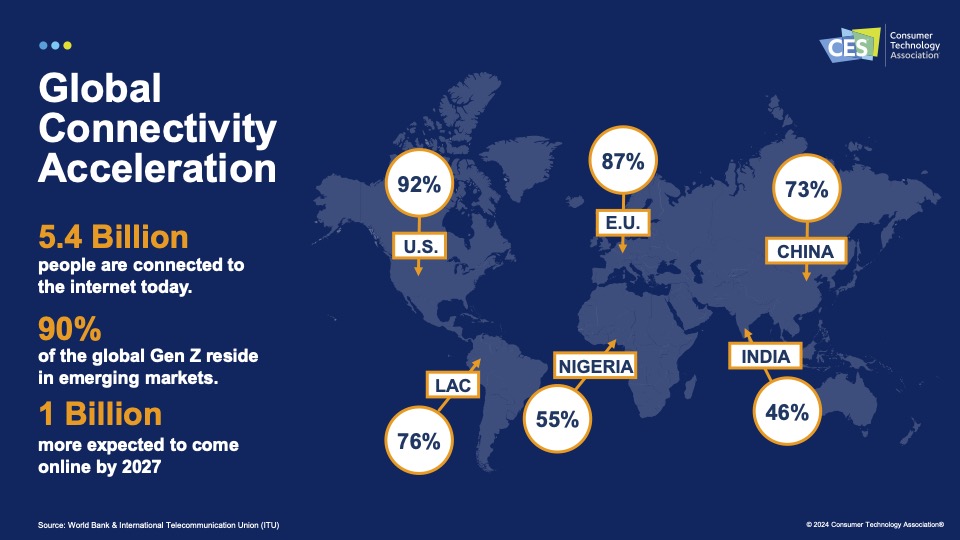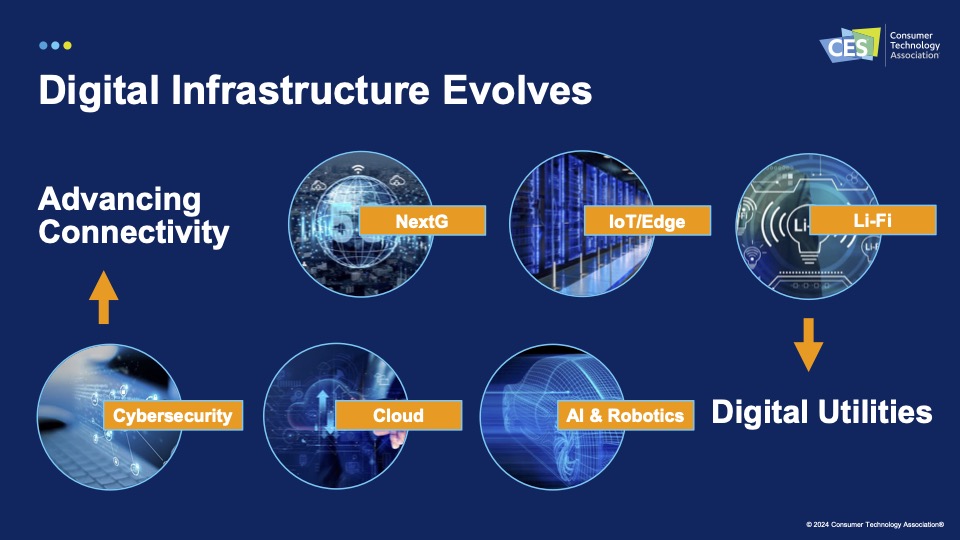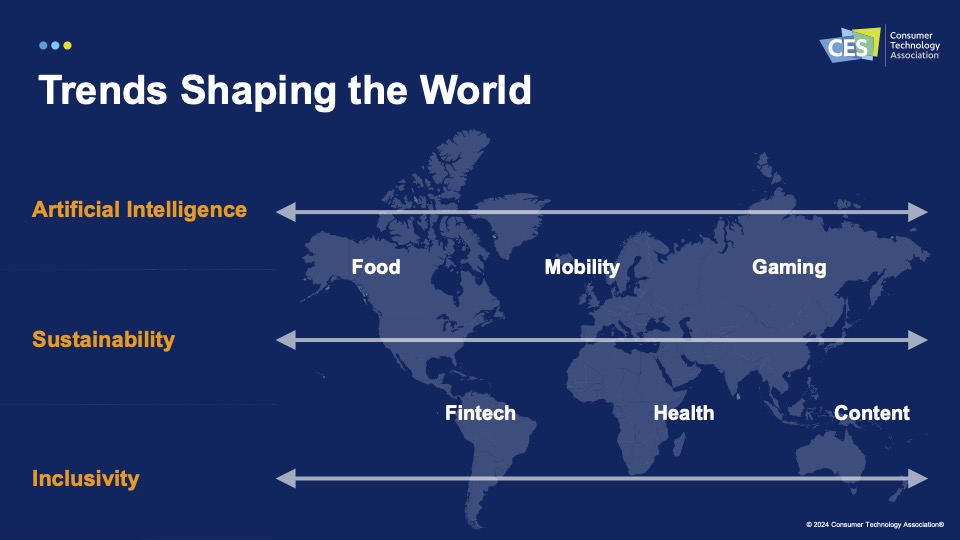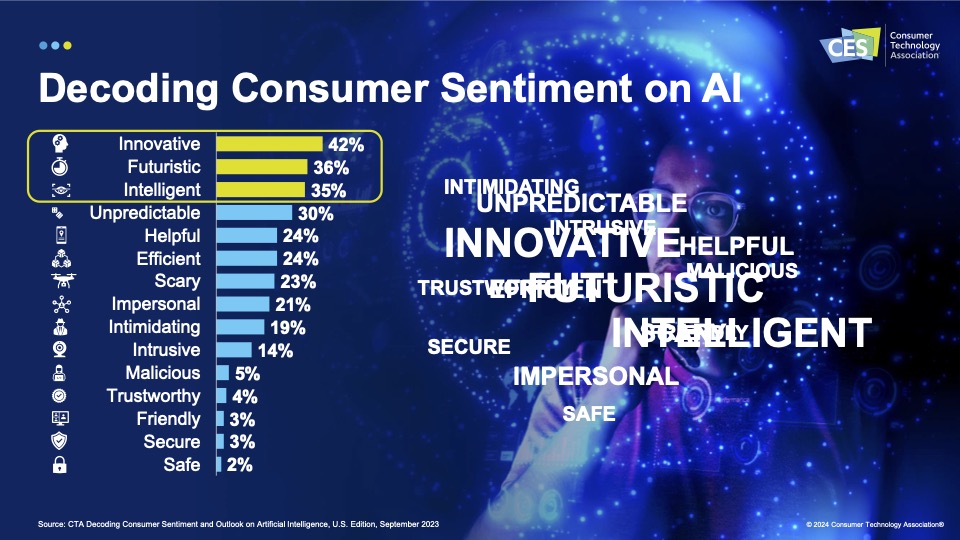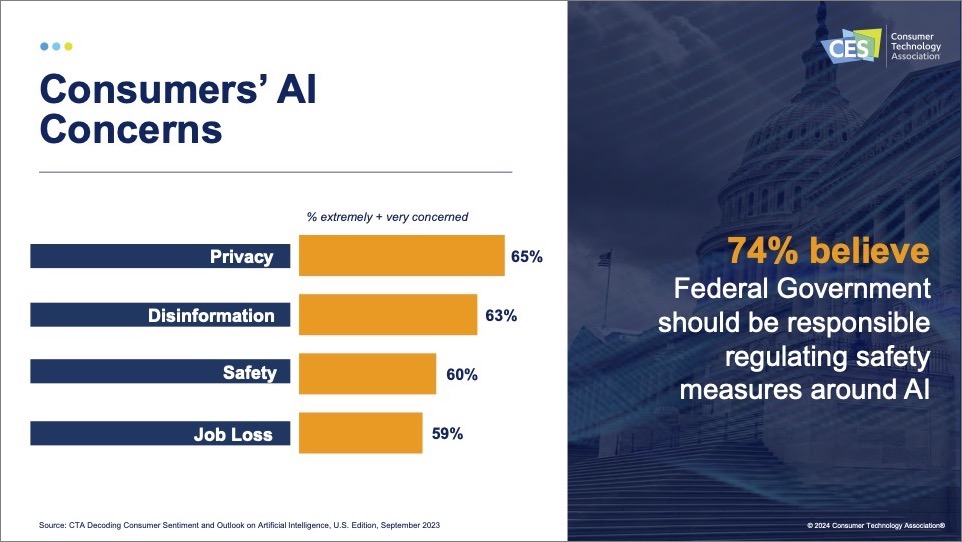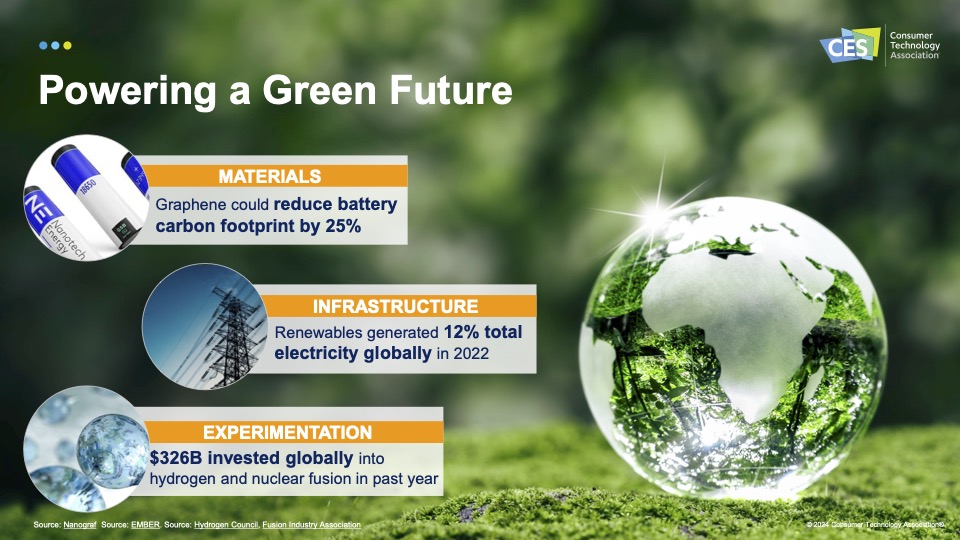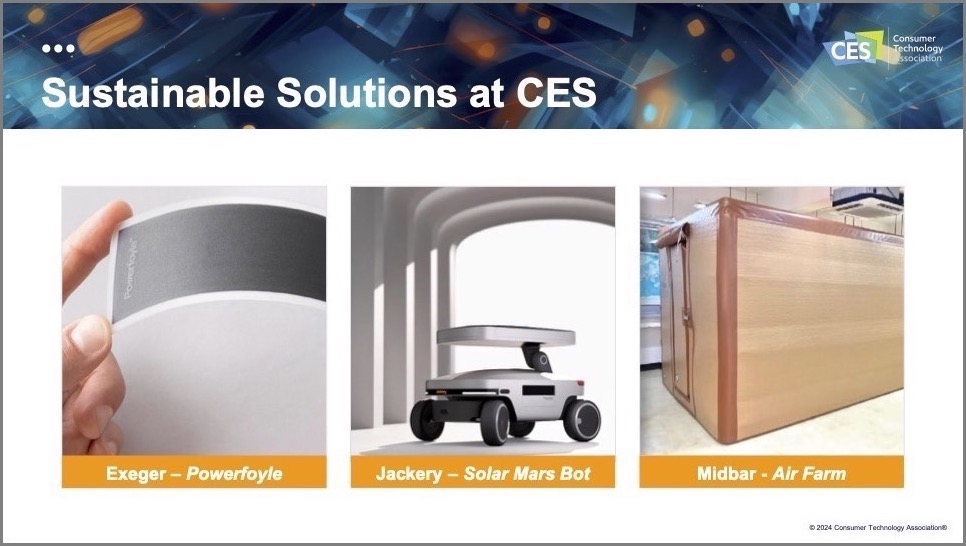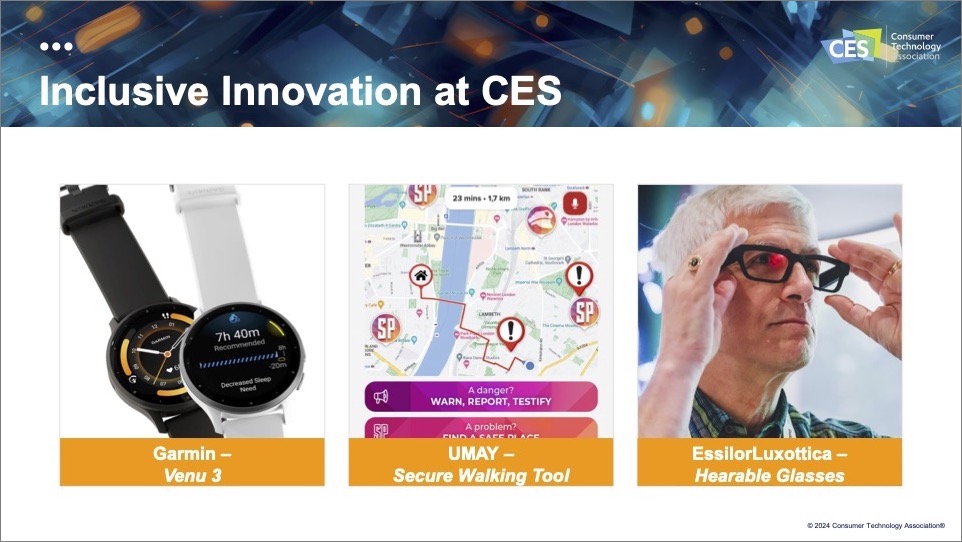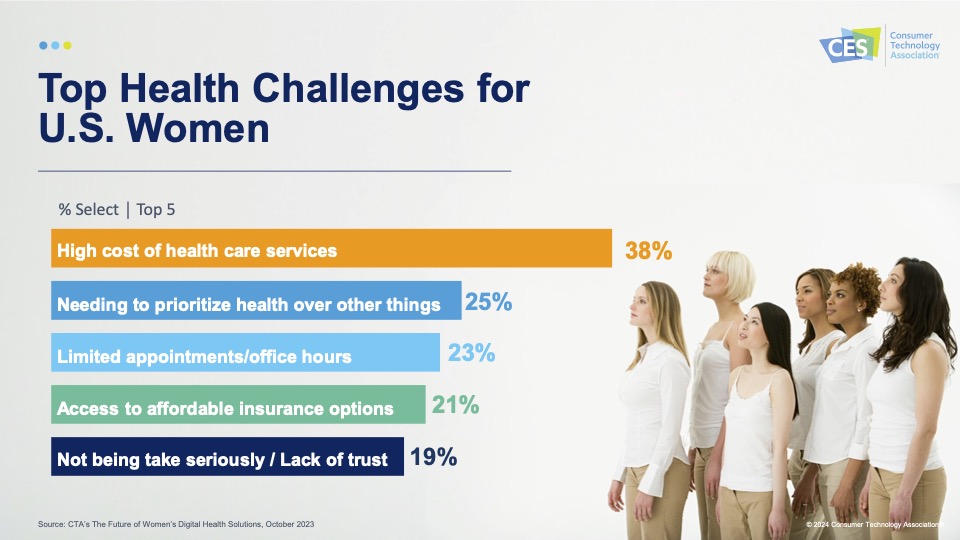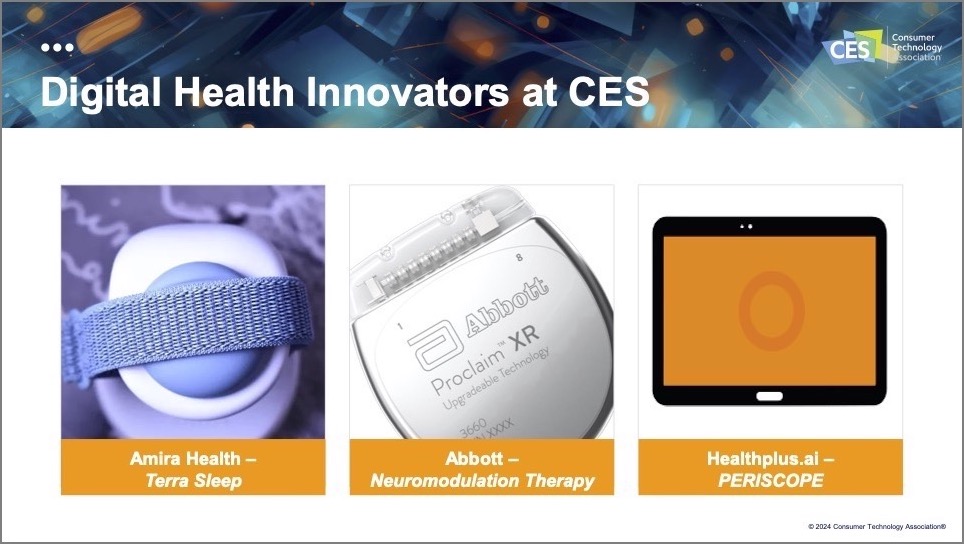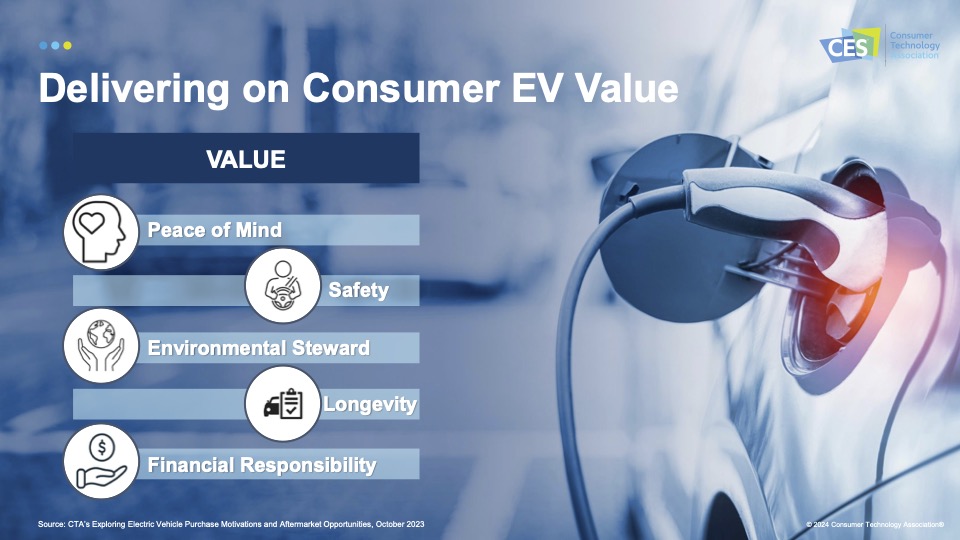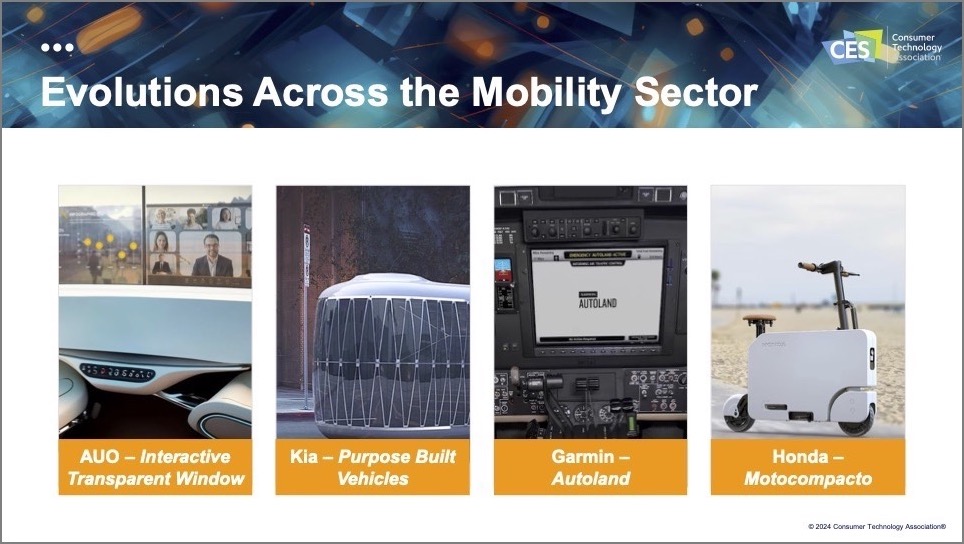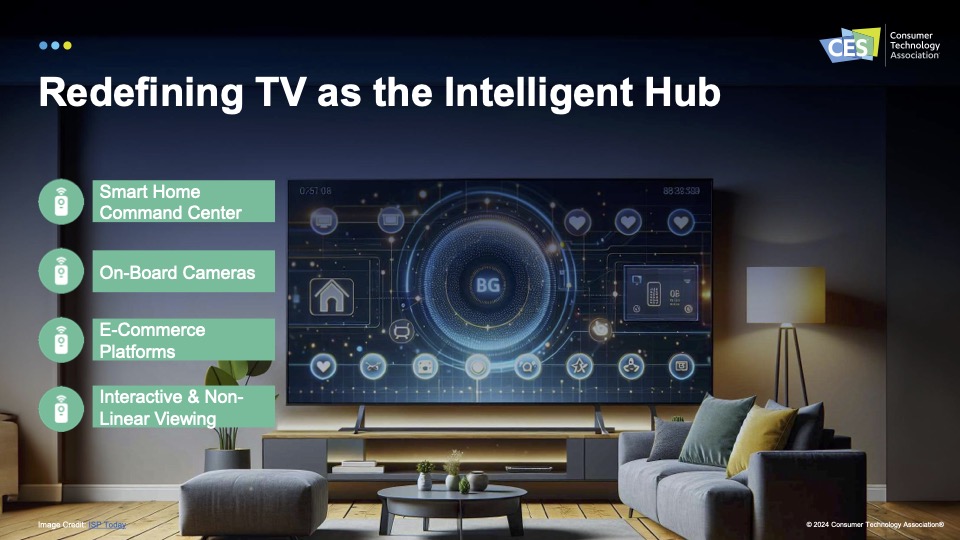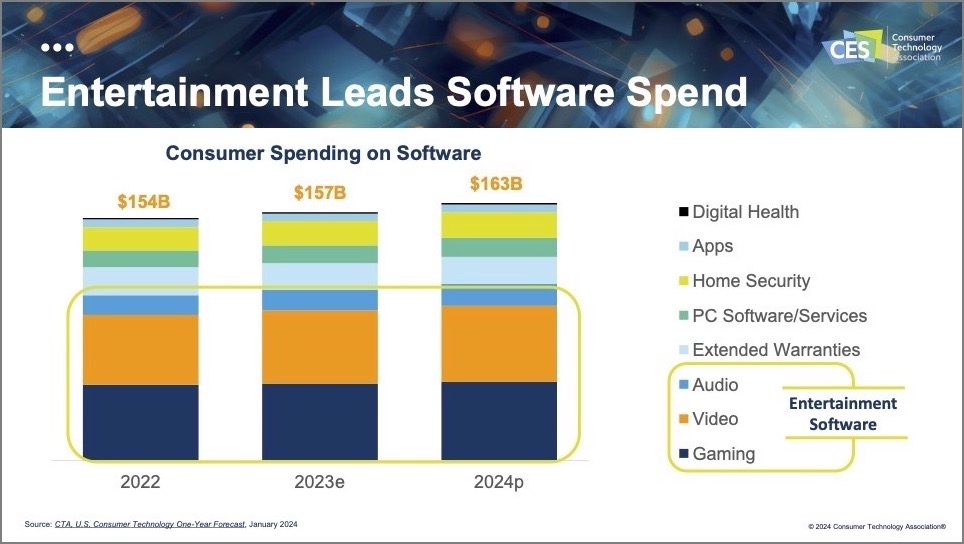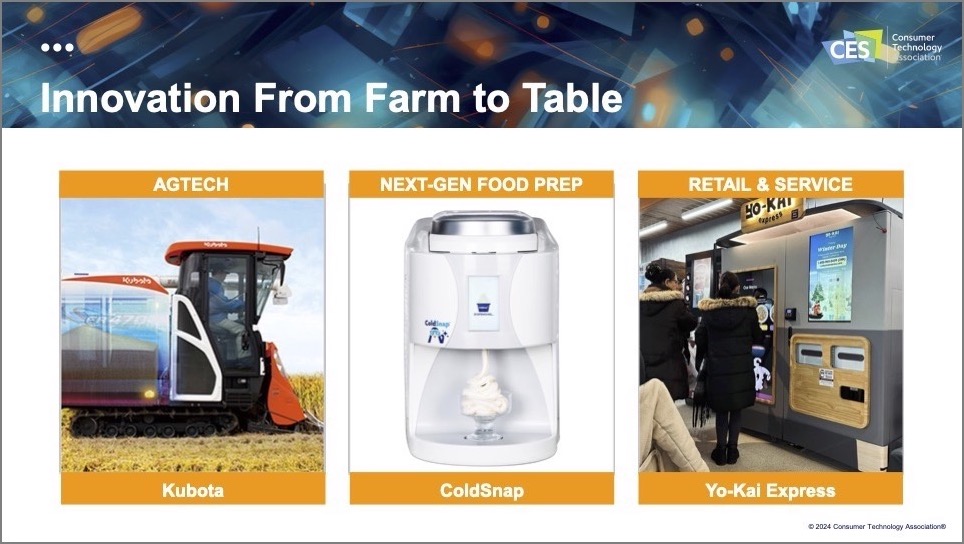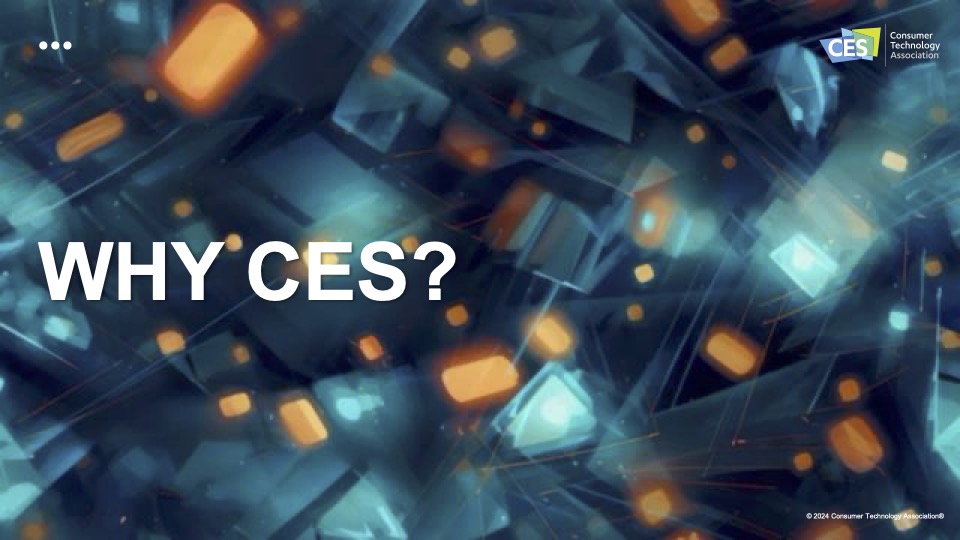#1694: OS text display bug fixed, CTA Tech Trends from CES, what TidBITS readers would pay for a Vision Pro, Pong Wars
The important news from last week is that Apple released macOS 14.3.1, iOS 17.3.1, iPadOS 17.3.1, and Safari 17.3.1 to address an annoying bug in WebKit that could cause text to overlap or be duplicated while you were typing. Adam Engst runs down the results of our poll asking how much you’d pay for a Vision Pro based on how much value you’d get from it and shares Pong Wars, an amusing mashup of Pong and Breakout that feels like a hyperactive 8-bit lava lamp. Finally, Jeff Porten rejoins us with coverage of the Consumer Technology Association’s annual Tech Trends to Watch presentation from the recent CES trade show. Notable Mac app releases this week include Lunar 6.6 and Mactracker 7.12.14.
macOS 14.3.1, iOS 17.3.1, iPadOS 17.3.1, and Safari 17.3.1 Fix WebKit Text Bug
You’ll want these updates. Apple has released macOS 14.3.1 Sonoma, iOS 17.3.1, and iPadOS 17.3.1 to fix a bug in WebKit that has been causing significant annoyance among Apple users since mid-December 2023 (see “macOS 14.3 Sonoma Text Display Bug to Be Fixed Soon,” 7 February 2024). The day after the other updates, Apple pushed out Safari 17.3.1 to fix the bug in macOS 13 Ventura and macOS 12 Monterey.
The bug caused words or entire lines to seem to disappear and reappear, jump around, or overwrite other text while you were typing in any app that relied on WebKit, most notably Mail, Notes, and Safari, but also including third-party apps like Mimestream and MarsEdit. The problem was disconcerting but primarily cosmetic—the actual text wasn’t changing, although there were reports that submitting a Web form with mangled text could lock it into an undesirable state. Any action that caused the window to be redrawn—resizing, switching to another window and back, closing and reopening—would return the affected text to its correct state, at least temporarily. Although most reports revolved around Mac apps, iOS apps were also affected.
Users and developers alike have been reporting the bug to Apple for some time now, and it was fixed in the open-source WebKit browser engine several weeks ago. There’s no telling why it took Apple so long to deploy these updates, but the company may have been waiting to see if it could include security fixes (there aren’t any) or delay until the next scheduled updates. (One developer told me that the bug was present in macOS 14.4 beta 1 but was fixed in 14.4 beta 2.)
Apple also released watchOS 10.3.1, noting only generic “improvements and bug fixes.” Since watchOS also relies on WebKit, it probably received the update, but Apple didn’t see the need to mention that fact in the release notes, given that text entry on the Apple Watch is uncommon. tvOS has seemingly not received an update, likely because text entry is even less common there, though I expect Apple to integrate the new WebKit version in a future update.
Vision Pro Value Poll Results: $500–$1000 or Nothing
Last week, we asked how much you would pay for an Apple Vision Pro, knowing what you know now about it and its capabilities. This was not a referendum on whether the Vision Pro’s price is unreasonable, but an attempt to get people to think beyond techno-lust and consider how much value they would receive from a Vision Pro.
To put the decision in context, I provided six possibilities for the poll, bookended by the extremes of “I ordered one” and “I wouldn’t buy one.” The remaining answers set price bands that roughly match the costs of existing Apple products, letting respondents compare the perceived value of the Vision Pro to familiar devices.
The poll drew 257 responses, which is low compared to some of our recent polls, suggesting that many TidBITS readers have sufficiently little opinion about the Vision Pro that they weren’t even interested in hazarding a guess. Here are the results.
The top two responses had little in common other than their vote counts. 37% of respondents said they would pay between $500 and $1000 for a Vision Pro, suggesting that they considered it equivalent in value to a basic iPhone, iPad, or good external display for a Mac. That was my vote—I can’t see the Vision Pro making me more productive on an everyday basis, but it might be sufficiently helpful when traveling to justify paying that much.
However, just slightly behind that answer, with 35% of the votes, was “I wouldn’t buy one.” That suggests to me that many people see the Vision Pro as a solution looking for a problem. Six years ago, I reviewed the Royole Moon, an $800 “3D mobile theater,” and while it was interesting to test, I couldn’t imagine using it for anything real and was happy to send it back (see “The Dark Side of the Royole Moon,” 25 April 2018). Although the Vision Pro is vastly more impressive than the Royole Moon, for many people, it may not feel any more useful.
Our third and fourth vote-getters also clumped. 13% of respondents said they felt the Vision Pro was equivalent in value to an iPhone Pro, iPad Pro, or Mac and thus justified a price between $1000 and $3500. I realize that’s a wide band—I might consider one if it was $1200 but would giggle at a $3300 price tag—but it feels like these people would buy a Vision Pro if Apple could get the price down to something closer to a MacBook Air.
On the other side of the price range, 9% of respondents felt the Vision Pro would be worth only between $100 and $500, placing it alongside the Apple Watch in value. It’s possible that this choice, like the Under $100 answer that received only 3% of the votes, didn’t receive many votes because people couldn’t bring themselves to value such a significant piece of technology so low. It must be worth more than $500, right? Or they consider the Vision Pro to be little more than a novelty.
Also, at the bottom of the vote tally with 3% were the seven or eight people who had already ordered a Vision Pro. Part of my reason for running this poll is to get a sense of what kind of Vision Pro coverage TidBITS readers want to see. With so few readers jumping on the Vision Pro bandwagon, I can’t see reporting on minor updates to visionOS (we’re up to version 1.0.3 now). Most people won’t care about such details. We do plan to publish some additional perspectives about what it’s like to use the Vision Pro, but I’ll focus most of my Vision Pro efforts on TidBITS Talk discussions. If there’s some Vision Pro coverage you’d like to see, please suggest it in the comments, and if I agree that it would be of broad interest, I’ll see if I can find someone to write it.
Reading Too Much into Pong Wars
Jason Kottke recently said he could spend all day watching Koen van Gilst’s Pong Wars, a JavaScript-based mashup of Pong and Breakout (designed by Steve Wozniak with help from Steve Jobs) that feels like a hyperactive 8-bit lava lamp. Pong Wars features two balls, Day and Night, that bounce according to the physics of those games. The Day ball travels through light areas and turns dark blocks light, whereas the Night ball does the reverse, turning light blocks dark.
Simple though it is, Pong Wars is mesmerizing. I couldn’t prevent my brain from rooting for the underdog (“Go, Day!”), wondering how unbalanced the score could get (Night always led and briefly exceeded 800 of the 1024 possible points), assigning narrative to the onscreen actions (“Watch out, he’s got a groove going on the bottom.”), and reflecting on whether it was playing out larger themes of good versus evil (or at least Spy vs. Spy).
Taking Kottke’s comment at face value, I let Pong Wars run while doing other things and came back a while later to discover the two balls locked in a vibratory loop (below left). That seemed odd, so I reloaded the page. The final state was exactly the same, so I closed the page and opened it again, starting a timer to see how long it would go. Indeed, 32 minutes in, it would always get stuck in the same way.
I pinged Koen van Gilst on Mastodon about the need for an initial random seed, but my old friend Keith Dawson popped up a few minutes later with suggested fixes. Since Pong Wars is open source and just a single index.html file on GitHub, I copied it locally, made Keith’s changes, and voila! Day and Night are more evenly matched in Keith’s modified version (above right), and although every run-through so far has eventually ended up in a vibratory loop, it’s no longer predictable when it will happen.
Who will port Pong Wars to the Vision Pro so the balls can bounce around your house? For now, I’d settle for a macOS screen saver.
Consumer Technology Association Tech Trends for 2024
Every year, the Consumer Technology Association provides a roadmap to the coming year with its “Tech Trends to Watch” talk at CES, its annual convention and trade show in Las Vegas. I couldn’t attend this year, but I tuned into the livestream of the Tech Trends event and picked up the 2024 predictions. As always, note that CTA is the nonprofit booster organization of the tech industry, so its predictions come with an agenda and are always rose-colored—even bad news gets a positive spin here. I’ll also provide some observations and opinions based on many years of attending CES and watching the industry.
This year’s presentation was given by Brian Comiskey, Director of Thematic Programs at CTA, and Jessica Boothe, Director of Research. I missed Steve Koenig, historically one of two presenters of Tech Trends (see “CES 2022: Another Year, More Tech Trends,” 13 January 2022), who reliably sprinkled his presentation with dad jokes and groaner puns.
The talk began with a somewhat anomalous discussion of the youth consumer market; Tech Trends tends to present a few slides on the overall market before delving into any segments. Generation Z is generously defined here as ages 11 through 26 and adds up to 69 million Americans, or roughly one-quarter of the US population. Unsurprisingly, they’re more likely to splurge on tech purchases than the rest of us, but given their limited purchasing power, one wonders how many lined up for Apple Vision Pro. Globally, 90% of Generation Z is in emerging markets, but CTA didn’t comment on whether this is good or bad for the tech industry. Presumably, it’s good that a new generation with a solid interest in technology is coming online, but that raises the issue of what percentage of that market can afford to purchase these gadgets, especially the pricey latest-and-greatest announced at CES.
After that, the presenters took a step back. Worldwide, 5.4 billion people are on the Internet—including people who connect only with their phones—and this is expected to increase by another billion by 2027. This is roughly 65% of humanity now and a projected 77% in only 3 years, which seems optimistic without any indication of what would drive these new adoptions. That said, I would have guessed that over two-thirds are online now, and I’m surprised that around 10% of the US and EU are not yet online.
The presentation then turned to the “digital infrastructure,” one of many buzzwords that the CTA reps began to toss into the presentation. Digital infrastructure comprises the connectivity methods used to transmit information and the “digital utilities” that can be derived from that connectivity. A digital utility can be defined as anything reaching an audience that’s transmitted over these networks, including TidBITS. But this talk is focused on the cutting edge, so CTA highlighted perennial favorites like artificial intelligence and robotics, cloud computing, and cybersecurity, with a new emphasis on AI.
Among the advanced connectivity methods: NextG, a catchall term for whatever comes after 5G networks; Internet of Things and edge computing, which refer to adding Internet connections to everything from toasters to crop sensors; and Li-Fi, a visible-light networking technique which may be preferable to Wi-Fi due to higher security under certain conditions.
Unsurprisingly, CTA believes the key drivers of upcoming technological trends are AI and sustainability, with the creation of “green tech” that is less resource-intensive, closer to carbon-neutral, and easier on power grids than the technology of the past. CTA adds “inclusivity” to these two drivers, but it’s hard to square its addition with the other two without more evidence. CTA defines inclusivity as assistive technologies for the handicapped, but I’ve already noted the economic barriers facing Generation Z and emerging markets, and I would include those as barriers to inclusion. CTA highlights strides in assistive technologies for underserved markets, but whether these will have an impact large enough to be measured against global trends remains to be seen.
Fully 90% of Americans are aware of AI but are probably only familiar with ChatGPT, which is a tiny slice of where we’ll encounter AI in the very near future. It will be embedded in chips and sensors in a wide range of technologies, be added to TVs, and generally be part of the digital infrastructure. CTA gave a special callout to Microsoft Copilot, the AI that Microsoft is adding to Windows and Office 365 that will have a dedicated keyboard key on new computers. Apple already dedicates a function key to Siri, and Siri will likely someday get the generative AI oomph we’re seeing elsewhere, but one wonders when that might happen and how effective it will be when it arrives.
A fascinating slide on consumer sentiment about AI technologies followed, discussing how many people agreed with particular adjectives relating to AI. CTA summarized this as “most people are positive about AI,” but I read this slide as a thoroughly mixed bag. It’s interesting that over one-third of respondents already see AI as “intelligent” (AI researchers argue this point ad infinitum), and one-quarter think of it as “helpful” and “efficient.” But I see the keywords like “unpredictable,” “scary,” “impersonal,” and “intimidating” also got a large number of responses. And look at the bottom four items on the list! While the AI expert community has proponents and detractors, it seems that the more educated someone is about AI, the more mindful they are of the wide range of technologies and aspects of society that will be disrupted soon.
For this reason, it’s unsurprising that nearly three-quarters of respondents believe there’s a strong role to be played by the federal government in regulating AI and its implementations, citing privacy, disinformation, safety, and job loss as key concerns. But at issue here is whether and how that regulation will take place.
CTA then switched to discussing sustainability and presented several positive statistics about technology’s impacts on the climate and environment. Improvements to batteries using graphene technology will reduce the carbon footprint of new batteries by 25%—which may not sound like a big deal until you consider that upcoming improvements to power grids will require a ridiculously large increase in battery manufacturing. CTA says that renewable energy constituted 12% of global electricity generation in 2022, a respectable number but lower than some might have hoped. (However, other sources say electricity production from renewables is closer to 33%, and the lower figure is in consumption, not generation.) In the past year, $326 billion has been invested in new energy technologies, including hydrogen and nuclear fusion—a large sum, but there are significant barriers that have to be overcome (if possible) before these can be put into use.
CTA claims we’re on track to having carbon-free electrical generation in the United States by 2035 and a “net zero” carbon impact by 2050. I put “net zero” in quotes because experts define it in various ways—does it refer to zero emissions or potentially bogus carbon offsets? In either case, the less carbon pumped into the atmosphere, the better, so this is good news. The real question is whether it will be good enough news, given that any increase in global temperatures has real and expensive impacts, and we’re expected to have quite a bit of that.
CTA highlighted three new tech releases of interest. Exeger announced a new product called Powerfoyle, which looks to be “what if duct tape could be a solar power cell?” Jackery announced the Solar Mars Bot, an Earthbound portable rover (inspired by the Opportunity rover) that has high portability when folded up but can generate 600 watts of solar power with its wings extended. The Midbar Air Farm can grow food anywhere it’s set up by pulling moisture from the air and watering plants with up to 99% less water than is needed in traditional farming.
CTA then shifted to discussing inclusive technologies on display at CES—and again, I’m unclear why they’re using this terminology rather than the more common “assistive” or “accessibility” terms. CTA claims that there are 1.8 billion disabled people in the world, which seems high, given that the World Health Organization’s number is 500 million lower, but likely varies based on definitions of disability. Regardless, CTA claimed that companies with inclusive technology see a 60% increase in revenue (over what?), so I guess that’s doing well by doing good? On deck were the Garmin Venu 3 smartwatch, which can integrate with wheelchairs and provide workouts for those using them, and the prototype EssilorLuxottica Hearable Glasses, which feature built-in hearing aid technology.
Also mentioned, but perhaps less related to assistive technology, is the Umay “Secure Walking Tool,” which appears to be an app that provides up-to-date safety information along a projected walking route. It’s advertised as “for women,” but as a traveling pedestrian, I’d also like to know whether a short route is as walkable as it seems on Google Maps when I’m in a new city.
CTA says the health technology market for women will reach $1.2 trillion by 2027, though one wonders how companies gender-match technology considering that my Apple Watch SE offers to track my non-existent ovulation. It seems to me that several of CTA’s health challenges facing women are equally applicable to men, although medical gender bias is inarguably a serious issue that needs to be addressed, probably more by societal rather than technological means.
From the Digital Health sector of the show, CTA highlighted Amira Health’s forthcoming Terra Sleep system, which monitors overnight hot flashes and automatically regulates a cooling pad to increase comfort. The company also provides Amy, an AI system that can answer health questions about menopause. Abbott announced the Proclaim XR, one of several surgical implant systems that can reduce chronic pain and help with other conditions. Healthplus.ai’s Periscope system is designed to help hospitals lower the post-surgical infection rate by determining the risks patients present in advance.
In mobility news, CTA claims that the future of cars is electric and self-driving, although, on that latter point, San Francisco would beg to differ for the time being. CES attendees also found electric motors integrated into other forms of transportation, including boats, scooters, bikes, and—because this is CES—flying cars. CTA says the rate of release and adoption of EV technologies will be based on how well the market responds to the values people place on driving EV vehicles, including better stewardship of the environment and other factors. More practically, according to my electric-car-driving editor, adoption is hampered mainly by cost and charging challenges for apartment dwellers and those taking long trips. Significant efforts are being made on charging networks, but people must adjust their thinking away from the gas station model.
Kia’s Platform Beyond Vehicle prototype is thinking well outside the box. The premise is that a single car has a base vehicle and modular components, so a PBV could change between running as a van, a truck, or a car by swapping out one module and swapping in another. Kia doesn’t explain how one would do this at home—or justify the cost of buying multiple modules for the same base vehicle—but the premise is cool. Garmin’s Autoland system is in the “hopefully, you’ll never need it” category; it will automatically land a general aviation plane if the pilot is incapacitated. (Don’t eat the fish!) And if you’re looking to get around on an electric scooter that folds up into a rolling briefcase, Honda has you covered with the Motocompacto ($995), which has a top speed of 15 MPH and enough battery oomph to travel 12 miles—after which it can charge on a standard outlet.
Meanwhile, back home, there’s a push to make the biggest screen in your home the smartest one. Various companies are striving to turn your TV into a central command center to control home automation technologies and cameras and provide a one-stop e-commerce shopping center. (Something I’m sure we’ve all been waiting for.) Additionally, tomorrow’s TVs will expand on your current video lineup with interactive videos and “nonlinear” programming—think Choose Your Own Adventure and YouTube in addition to what’s currently on offer. Color me skeptical, and that’s before we get into the privacy issues surrounding smart TVs (see “How to Turn Off Smart TV Automatic Content Recognition,” 18 December 2023). I’d rather control my smart lights from my phone than walk from my living room to my bedroom in the dark, and I’d rather do my shopping on my Mac, where I can pull up Wirecutter and avoid Amazon’s sponsored items cluttering my searches. I’m sure that at a future CES, there will be TVs that “allow” me to have a curated “shopping experience” where I can buy a sweater or oversized tote bag featured on a popular TV show.
However, one proposed integration may be a hit with some. Now that online sports betting is legal in 29 states and the District of Columbia, and given that the TV is already where most people like to watch sports, having wagers a few button presses away during the game could be attractive to many people. If costly.
What’s really going on is that TV manufacturers are looking for reasons to get you to continue to upgrade since most people already have the largest TV that will fit in their homes, and there isn’t much reason to upgrade to an 8K TV. Still, expect to see more variety in streaming services as they move to include more international programming and multilingual content libraries. I expect that will accelerate in 2024 while we’re still in the Hollywood release lull caused by last year’s writer and actor strikes. Americans have long been resistant to dubbed and subtitled programming, but then Squid Game came along and Netflix had its own Gangnam Style.
Overall, the tech industry is in the midst of a pivot from primarily providing the hardware to also providing the software and services the hardware uses. Of the $512 billion domestic market for consumer technology projected for 2024, 68% will be from hardware and 32% from software and services—which may account for Apple insisting on continuing to take its cut from software sales in other app stores. The big driver in software and services is entertainment; the lion’s share is in gaming on every screen you own.
The presentation wrapped with an overview of how technology empowers “human securities,” including agricultural technology, smart communities, and financial technology. I would have liked to hear more about this, but CTA quickly segued to a discussion of food technology that ranged from smart tractors to a Keurig-style machine for ice cream to a vending machine that serves fresh noodles. (I’d review the noodles, but the closest one is 90 minutes from here, so I’ll leave it to Adam to check out the one in Ithaca.)
Amusingly, the slides I downloaded end with this:
…but my notes from the presentation don’t have this slide or any particular answers to the question. So, I’ll contribute my own: CES is a great place to see the upcoming weird, wacky, and wonderful in consumer tech, and when I can’t attend, I look forward to seeing the coverage this generates in the media. When I can attend, I enjoy finding tidbits of relevance to TidBITS, as it were. Hopefully, I’ll have another onsite report in 2025.
